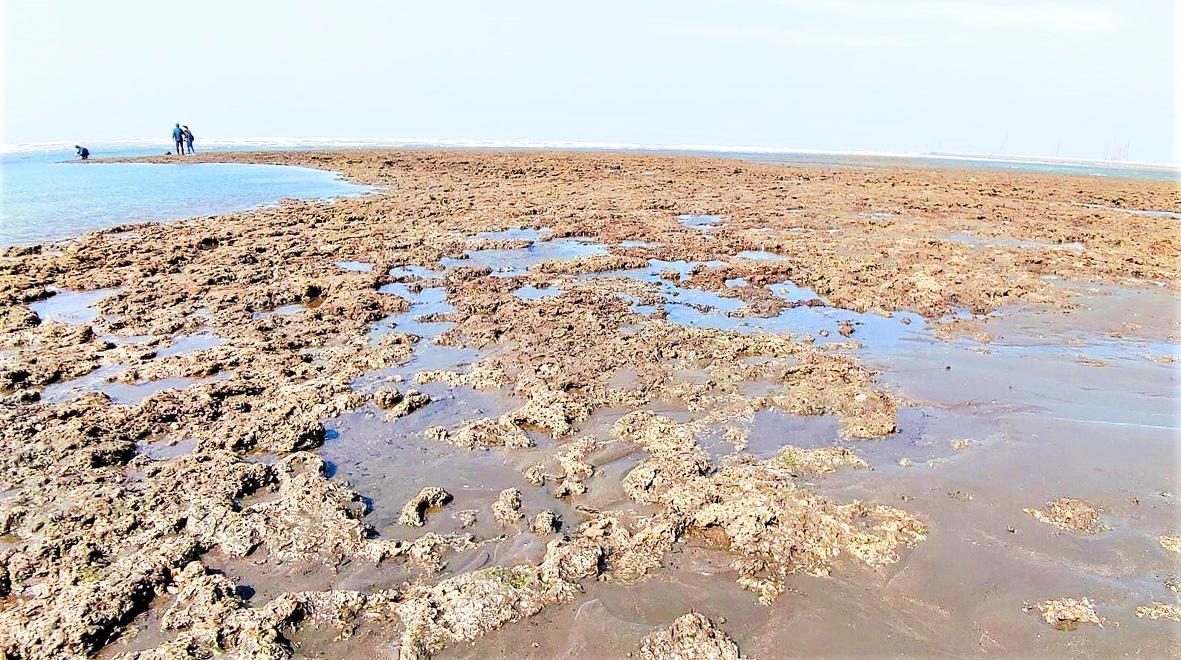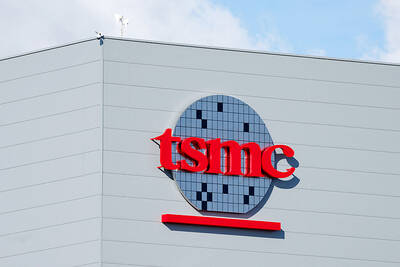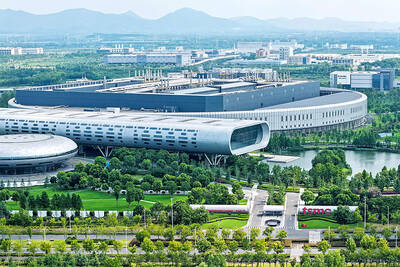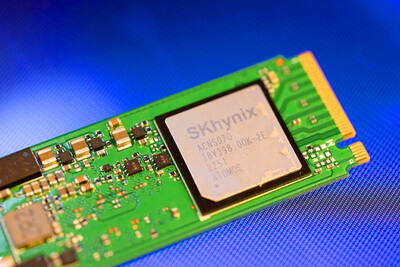The Ministry of Economic Affairs yesterday said it is ready to “sit down and exchange opinions” with environmentalists pushing a referendum to block the construction of a planned third liquefied natural gas (LNG) terminal at the Guantang Industrial Park (觀塘工業區) in Taoyuan.
The so-called “pink storm” referendum has garnered more than 430,000 signatures to stop the terminal and protect “algal reefs that are more than 7,500 years old” off Guanyin District’s (觀音) Datan Borough (大潭).
“We are willing to communicate with environmentalists in any way possible,” Minister of Economic Affairs Wang Mei-hua (王美花) said.

Photo: Cheng Shu-ting, Taipei Times
“If the referendum process goes forward, the Central Election Commission would hold hearings, which we would participate in, but we welcome exchanges of ideas whenever possible,” Wang said.
“Let us sit down and talk,” she said.
Environmental groups have accused the government of not considering “possible win-win alternatives” to the site for the planned project.
They have dismissed Wang’s remarks that blocking the project would lead to more burning of coal, saying that it amounted to “threatening the people.”
“In no way are we ‘threatening the people,’” Wang said. “Long-term planning is required to ensure electricity supply.”
President Tsai Ing-wen’s (蔡英文) energy transition plan calls for the proportion of natural gas used in electricity generation to be raised to 50 percent, said CPC Corp, Taiwan (CPC, 台灣中油), which is responsible for the construction of the LNG terminal.
“Currently we have two receiving terminals that are already running flat out,” CPC spokesman Chang Ray-chung (張瑞宗) said. “Without a third receiving terminal, there would be no way to supply the seventh, eighth and ninth generators at the Datan LNG plant.”
Generators 8 and 9 would between them provide 6 percent of Taiwan’s total power output, Chang said.
“If that 6 percent deficit is not filled, we would have to burn coal, which releases twice as much greenhouse gas and is also more polluting,” he said.
The first storage tank at the planned terminal is scheduled to be finished in October next year, although the whole complex, which is to have two storage tanks, a wharf and a regasification system, is not slated to be completed until 2025, he said.
When asked if alternatives to the site could be found, Chang said that a move would require a lengthy process of planning and assessment.
“We went through years of environmental impact assessments for the current site,” he said. “All of that would have to be repeated.”
“A site further from the power plant would require 30km to 50km of pipeline,” Chang said.
“Moreover, no matter what site is chosen, there is no guarantee that there would not be objections,” he said.
An assessment by CPC did not find a vibrant algal reef environment that environmentalists claim exists at the site, Chang said.
“The planned terminal has been moved 740m offshore, where the water is more than 10m deep,” he said. “The seafloor is sand and is not a biodiverse site.”

Taiwan Semiconductor Manufacturing Co (TSMC, 台積電) secured a record 70.2 percent share of the global foundry business in the second quarter, up from 67.6 percent the previous quarter, and continued widening its lead over second-placed Samsung Electronics Co, TrendForce Corp (集邦科技) said on Monday. TSMC posted US$30.24 billion in sales in the April-to-June period, up 18.5 percent from the previous quarter, driven by major smartphone customers entering their ramp-up cycle and robust demand for artificial intelligence chips, laptops and PCs, which boosted wafer shipments and average selling prices, TrendForce said in a report. Samsung’s sales also grew in the second quarter, up

On Tuesday, US President Donald Trump weighed in on a pressing national issue: The rebranding of a restaurant chain. Last week, Cracker Barrel, a Tennessee company whose nationwide locations lean heavily on a cozy, old-timey aesthetic — “rocking chairs on the porch, a warm fire in the hearth, peg games on the table” — announced it was updating its logo. Uncle Herschel, the man who once appeared next to the letters with a barrel, was gone. It sparked ire on the right, with Donald Trump Jr leading a charge against the rebranding: “WTF is wrong with Cracker Barrel?!” Later, Trump Sr weighed

LIMITED IMPACT: Investor confidence was likely sustained by its relatively small exposure to the Chinese market, as only less advanced chips are made in Nanjing Taiwan Semiconductor Manufacturing Co (TSMC, 台積電) saw its stock price close steady yesterday in a sign that the loss of the validated end user (VEU) status for its Nanjing, China, fab should have a mild impact on the world’s biggest contract chipmaker financially and technologically. Media reports about the waiver loss sent TSMC down 1.29 percent during the early trading session yesterday, but the stock soon regained strength and ended at NT$1,160, unchanged from Tuesday. Investors’ confidence in TSMC was likely built on its relatively small exposure to the Chinese market, as Chinese customers contributed about 9 percent to TSMC’s revenue last

LOOPHOLES: The move is to end a break that was aiding foreign producers without any similar benefit for US manufacturers, the US Department of Commerce said US President Donald Trump’s administration would make it harder for Samsung Electronics Co and SK Hynix Inc to ship critical equipment to their chipmaking operations in China, dealing a potential blow to the companies’ production in the world’s largest semiconductor market. The US Department of Commerce in a notice published on Friday said that it was revoking waivers for Samsung and SK Hynix to use US technologies in their Chinese operations. The companies had been operating in China under regulations that allow them to import chipmaking equipment without applying for a new license each time. The move would revise what is known